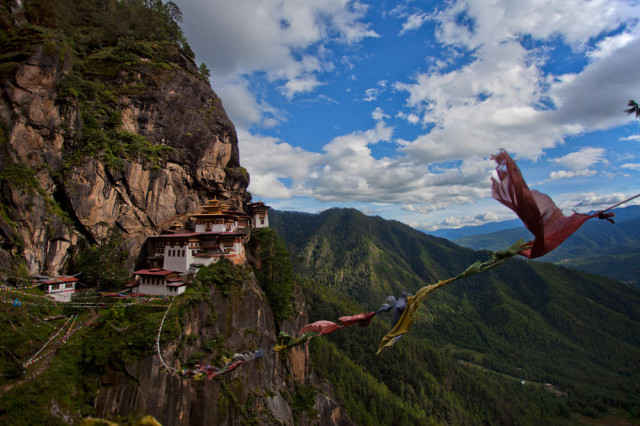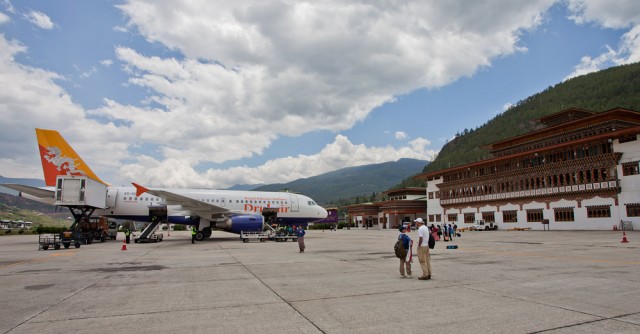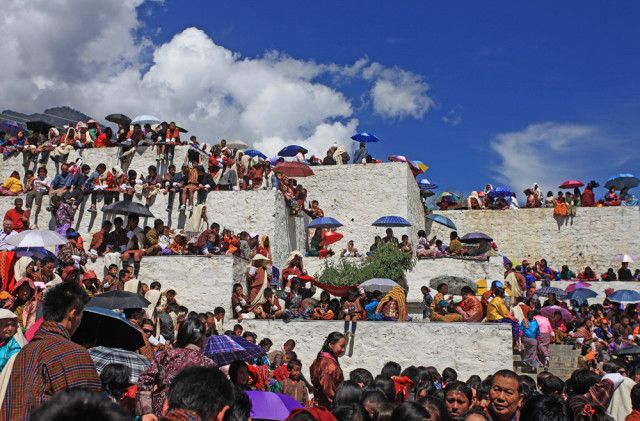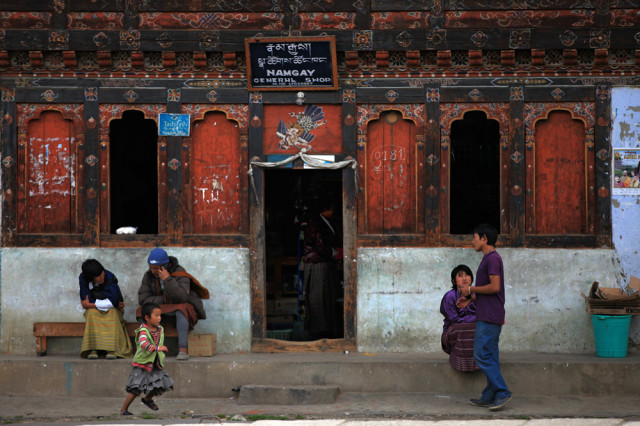Since I started photography tours to Bhutan earlier this year, lot of you have been asking me about Bhutan. What kind of place is this? Is its really mystical and remote? Is it convenient to travel through? How does one get there and what is the way to travel around?
A lot of information currently available online is geared towards travellers from countries other than India. So I thought it would be prudent to compile all the important information specific to Indian Travellers interested in visiting Bhutan.

Tiger’s Nest Monastery near Paro, Bhutan. Bhutan is a blend of beautiful Himalayan landscapes and cultural insights into Vajrayana Budhhism.
The Privileged Indian
Holding an Indian citizenship puts you in an advantage in Bhutan – we have a few privileges that are not enjoyed by rest of the world.
1. No high spending requirements. Unlike most countries in the world that are happy to have any kind of travellers, Bhutan prefers to limit entry to privileged tourists. Government regulation requires that travellers arriving in Bhutan must pre-book with a recognized travel agent and spend at least US$280 per day during their stay in the country. Thankfully, Indian Nationals are exempt from this rule. You can travel on your own and at a budget of your choice.
2. No visa required. A simple permit will do, which you can obtain on arrival. See more about this in the section on entry formalities.
3. No guides necessary, no pre-planned itinerary. Foreign travellers usually go on a pre-planned itinerary organized by the travel agent. Although this is strictly not necessary, the fact that you have pre-booked with a recognized agent and are most likely part of a group, restricts your movements. Entry may be denied to some monasteries and dzongs, when you do not have a guide with you. Indians, however, can travel independently. While the entry restrictions to monasteries and dzongs may still apply, authorities are lenient on enforcing this rule.
Entry Formalities
The rules for entering the country may change frequently, so it is always good to check with the authorities before you plan your trip. Here is the current set of rules that apply for Indian Nationals who are planning to travel to Bhutan.
If you are entering Bhutan by air, carrying a passport is necessary. A visa is issued on arrival and there are no fees involved.
If you are travelling by road, you need to submit either your voter’s ID or passport. An entry permit document is issued at the border check post by the immigration officials at the border. No visa will be necessary. Other documents for identification that are normally accepted in India, such as driving license and pan-card are not accepted. Ensure that you are carrying your passport or voter’s id.
Getting permits may become a little difficult, if you do not have a hotel booking on the night of your arrival in Bhutan. It is recommended that you book a hotel in advance at least for a night on arrival. This hotel can be entered as your address at Bhutan with immigration authorities. Arriving at the border without a booking may prompt additional scrutiny on your entry application.
How to Reach and Enter into Bhutan
By Air. The easiest way to get to Bhutan is by flying to Paro. Druk Air, the national airline of Bhutan connects Paro with Delhi, Mumbai, Kolkata, Guwahati and Bagdogra. There may be sporadic flights to Gaya as well. Indians may get a special fare that is different from the rates offered to foreign nationals. But such tickets can’t be booked online on their website. The best way to book tickets using special fare for Indian Nationals is by calling Druk Air office. Note that Indian or global flight search engines do not list Druk Air flights. Visit Druk Air website instead.
Note that it can be cumbersome to exit by road, if you have arrived in Bhutan by air. Your passport is stamped for entry at Paro Airport, but you will have to struggle to find the immigration offices on either side when you are exiting through remote border towns of Gelephu or Samdrup Jongkhar. Phuentsholing is slightly better organized.

The international airport and terminal and Paro, Bhutan.
By Land. The most popular point of entry to Bhutan from India is at Phuentsholing, a town bordering India at West Bengal. The Indian side of the border is called Jaigaon.
The airport nearest to Jaigaon is at Bagdogra, about 150km away. You can hire a taxi on arrival at Bagdogra Airport. The train stations nearby are New Jalpaiguri (about 150km away), New Alipur Duar (about 60km) and Hashimara (10km). Some trains connecting Guwahati with Kolkata ply via Hashimara. Nearly all the trains going to Guwahati pass through New Jalpaiguri and New Alipur Duar. New Jalpaiguri is an important station that is connected with several major cities across the country.
Overnight buses are available from Kolkata to Phuentsholing.
If you are travelling from Guwahati, Samdrup Jongkhar and Gelephu are two other options to enter Bhutan by road.
It is permitted to drive your India registered vehicle into Bhutan. Permits to take your vehicle into Bhutan can be obtained at the border.
Route Permits
Your entry permit or visa allows you to travel only in Paro and Thimphu Dzongkhags (districts). To go further east towards Punakha, Bumthang and other regions, you will require a route permit. This can be obtained at the immigration office in Thimphu. It is a simple process, but requires you to be present in Thimphu during the morning hours of a working day. It may take anywhere between 30 minutes to two hours to get your permits depending on how crowded the immigration office is. If you have hired a driver or a guide, he or she may take care of getting the permits done.
Currency, Foreign Exchange, ATMs etc
The Bhutanese currency – Ngultrum – is pegged at 1:1 with Indian Rupee. Indian currency is accepted throughout Bhutan. For a long time, Rs.500 and Rs.1,000 bills were not accepted in the country, so you had to carry a large number of Rs.100 bills. In the recent past, Rs.500 bills are accepted in most places, and some places may accept Rs.1,000 bills as well.
Until a year ago, debit cards issued in India could not be used in Bhutan to withdraw money from ATMs. Since 2012, Bank of Bhutan accepts debit cards issued by a few Indian Banks. But it is hard to say cards from which banks are accepted and which ones are not. The usual signs – visa & maestro are displayed in front of BoB ATMs, but you can’t be too sure. However, banks in Bhutan are becoming increasingly connected and it may not be long before any international card can be used in the country. Remember to draw just enough money, since local currency is not of much use once you are back in India.
Budget
Much like India, you can travel in Bhutan at a basic budget or in luxury. Unlike foreign travellers, Indian Nationals are not required to spend a minimum of US$280 per day.
Clean accommodation in towns usually begin at about US$20 per night. Always negotiate for ‘Indian Rates’. Public transport is available in the East-West Highway, the main artery that connects most districts in Bhutan. Elsewhere, it is rare or non-existent. Cars are usually priced similar to the hiring rates in India. Popularly available vehicles for hire are Suzuki WagonR and Hyundai Santa Fe for up to three people, Toyota Hi Ace for up to 7 people and Toyota Coaster for up to 15 people. Expect to pay similar or higher rates for food as in India, if you are eating in local restaurants. The restaurants that are typically visited by tourists may be priced two to three times higher than Indian restaurants of similar type.
Others
Is there anything else that you think should be part of this article on Indian Travellers who want to travel to Bhutan? Please leave a comment and I will be happy to include any relevant information.



